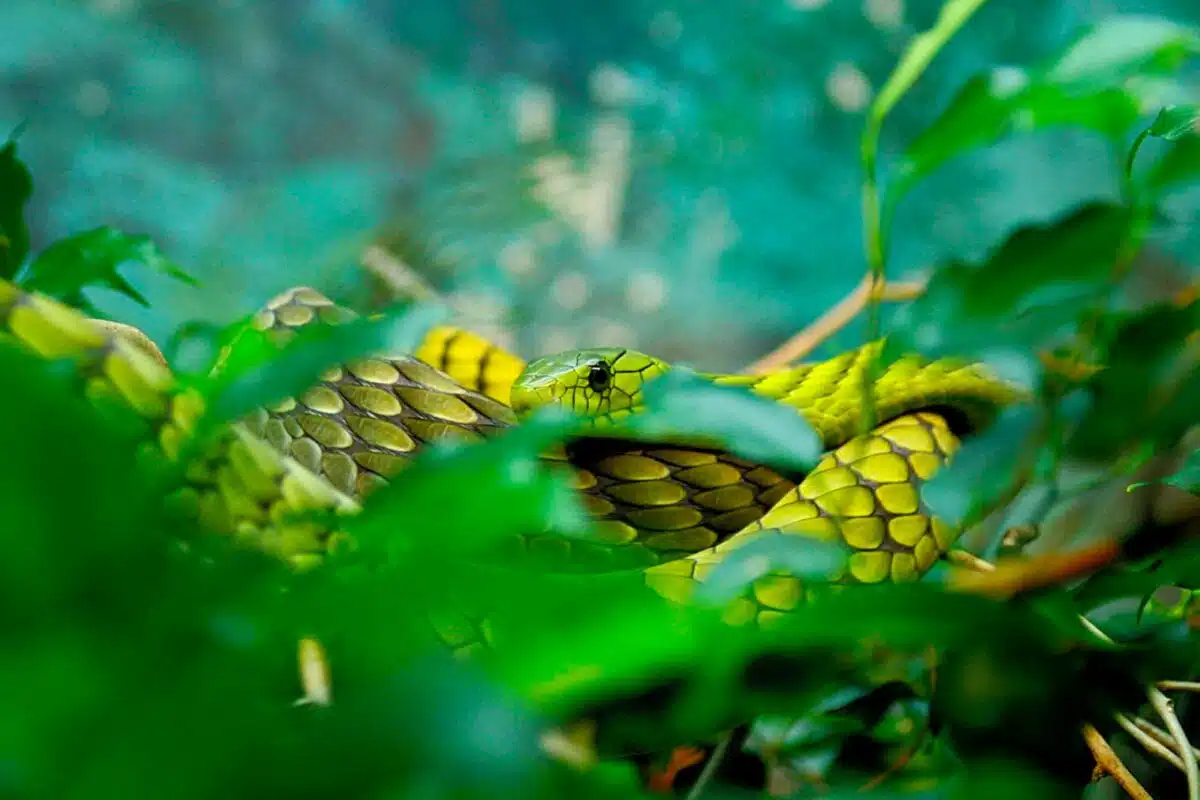Today we’ll be discussing two species that are vastly different: stargazer fish vs. green mamba. However, after this analysis you will see that they actually share more common traits than one would’ve thought.
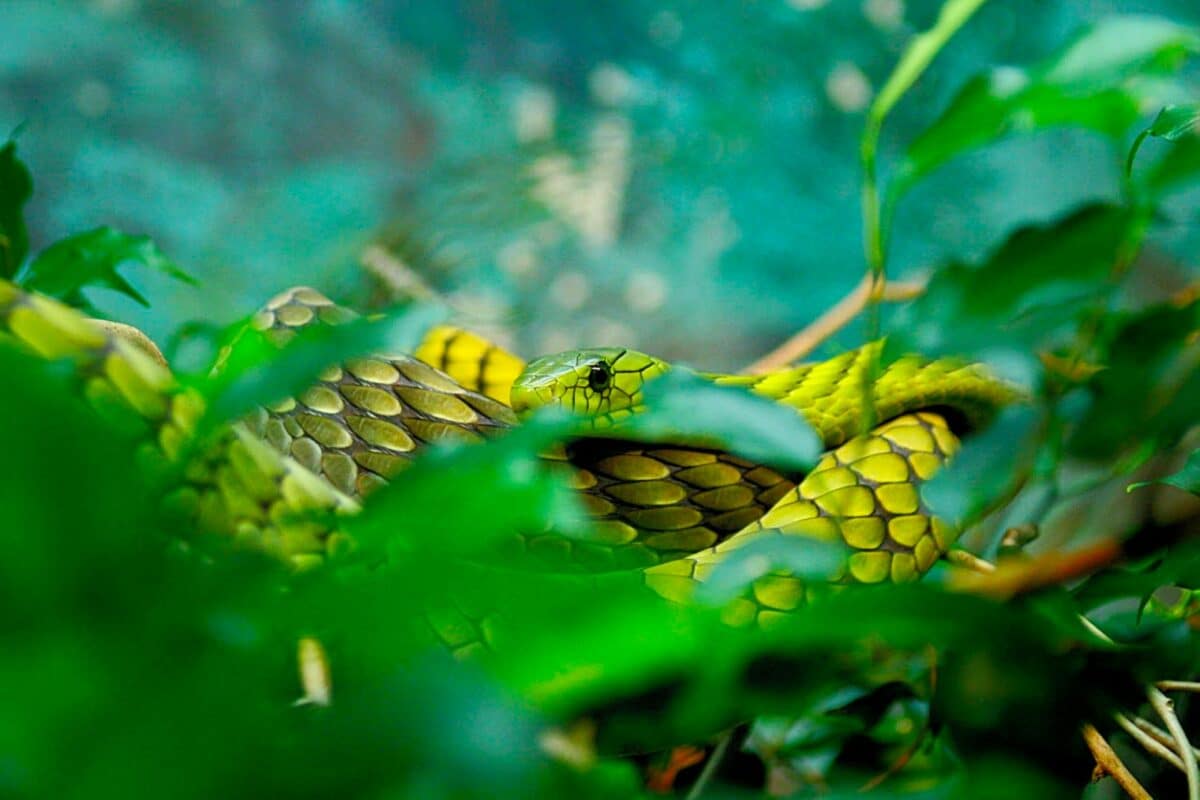
At times, human beings live under the notion of being the sole creatures ruling and inhabiting Earth. But scientists and biologists have done immense work in the form of experimentation and observation that has helped us dispel the self-proclaimed supremacy and burst our solitary bubble.
The aggregate knowledge we have today provides us with valuable knowledge helping us comprehend each organism or species in depth, but it requires additional studies to compare different species. Such quests help us enumerate the similarities and differences that could exist within the same family of animals or among two very dissimilar creatures.
It might sound futile, but in reality, it is the very basis of Science since it promotes scrutiny, facilitates inquiry, and supports investigation of all kinds.
This entire blog has been compiled to analyze two remotely related animals belonging to 2 very diverse species and families. Let us review stargazer vs. green mamba in this post.
A quick comparison: Stargazer Fish vs. Green Mamba
| Stargazer fish | Green Mamba | |
| Size | Weight: 6 – 13 pounds Length: 7 – 10 inches | Weight: 2.2 – 3.3 pounds Length: 5 – 11 feet |
| Speed and Movement Type | -Swims deep in the sea -Burries itself in the mud | -7 mph – Can swiftly move and climb trees and can also move swiftly in water |
| Bite Power | -Small and sharp teeth -Bites preys to instill venom | -Fatal biting capacity -Solid and long teeth |
| Intelligence | -Exhibit behavioral intelligence -Quietly detect their prey and plots a plan by hiding in the mud | -Extremely intelligent creatures -It can compute the next and safest move |
| Senses | -Good sense of sight deep in the sea -It can sense prey available in nearby locations | -Superb vision -Excellent sense of smell -Remarkable speeds for searching preys -It can detect motion |
| Offensive Powers | -Electricity jolts -Camouflage -Biting | -Relies on its vision more than smell to detect prey -Biting |
| Predatory Behavior | -Hunts prey from the sea floor holes dug inside -Disables prey with shocks -Burry themselves in mud to wait for prey -Injects venom -Eats tiny crabs, fishes, and crustaceans | -It preys on mice, bats, squirrels, frogs, and lizards -It follows a sit-and-wait strategy |
Stargazer Fish
What is a StarGazer Fish?
Stargazer is a type of fish considered to be a creature of two linked families named Uranoscopidae, commonly known as electric stargazers, and Dactyloscopidae, commonly known as sand stargazers. They both belong to the order known as Perciformes. Stargazers normally conceal themselves in the bottommost depths of the sea.
They can be physically identified owing to their elongated bodies and large, weighty, flat heads. Additionally, they have vertically inclined mouths. They have fringed lips and eyes placed on the top of their heads, giving them the characteristic name of stargazers. Their color is a dark tint of brown, letting them merge and camouflage with the sea bed, along with their scales having white spots.
The electric stargazers encompass around 50 species globally distributed in both types of seas i.e. warm and temperate. A few types of these fish have a huge spine on every shoulder and certain fish possess special electrical organs secured on the uppermost part of the head. The largest fish belonging to the respective family can grow up to approximately 20 pounds (9 kg) when weighed.
This uncommon fish possesses the characteristic feature of eyes placed on the upper part of its head and looks out for prey while the body stays embedded in the bottom of the ocean. These fish are poisonous and may also convey slight electric shocks to stun their prey.
Taxonomic Classification of Stargazer Fish
Biologists have developed their own system of grouping and classifying all the present organisms on this Earth based on their similarities and differences. Here’s the taxonomic classification of the stargazer fish:
Kingdom: Animalia
Subkingdom: Bilateria
Infrakingdom: Deuterostomia
Phylum: Chordata
Subphylum: Vertebrata
Infraphylum: Gnathostomata
Superclass: Actinopterygii
Class: Teleostei
Superorder: Acanthopterygii
Order: Perciformes
Suborder: Trachinoidei
Family: Uranoscopidae
Genus: Uranoscopus
Species: Uranoscopus Scaber
Which Habitat Is Home to the Stargazer Fish?
Stargazer fish inhabit regions of the West Atlantic Ocean, the Mediterranean, and the Pacific Ocean offshore Australia’s coastline. The densest population of this fish inhabit the Atlantic between the regions of North Carolina and New Jersey. In the Pacific, they are most prevalent in the southern part of Australia. Normally, they inhabit sea depths of approximately 120 feet.
These are seawater fish concentrated with brine, typically reflecting a species of minimum worry, and investigators have not detected considerable population fatalities. Nevertheless, the furthermost fish populace is constant and certain of these fish aid in building aquarium residents.
How Many Species of Stargazer Fish Are There?
The family comprises around 51 species, out of which one has been established to be extinct in eight genera. All the species are marine and are distributed worldwide in low and deep sea waters.
Well-Known Predators of Stargazer Fish
The Stargazer fish have limited predators, excluding humans, for the reason that all these types are poisonous. Moreover, numerous have a body part that generates electric shocks; consequently, a small number of predators are eager to feast on these fish. Virulence effects and electric shocks are chief causes for people hunting these fish to practice cautiousness.
Stargazers are a delicacy in certain cultures because the poison does not prove toxic when ingested. These fish are available for purchase in several fish markets after their electric organ has been detached.
What does the Stargazer Fish Prey on?
The Stargazer Fish feeds on small-sized shellfish, crawfish, prawns, crabs, and fish. Essentially the victims consist of species tiny enough to effortlessly get slurped into their mouth along with the suction of water.
How Do They Communicate?
Granting that the fish are in the water, they also interconnect like other animals. A fish conveys information with certain cues, pointers, and sometimes sounds. Certain species employ electric signals to relay communication.
Reproductive Behavior of Stargazer Fish
Stargazer Fish habitually mate between May and June, laying their eggs in the mud in the ocean beds. Later on, the eggs drift to the water’s surface. These fish attain complete sexual development swiftly, having the ability to produce offspring around 4 to 8 months following hatching. Stargazers have a life expectancy of around 5 to 6 years, with females usually outliving males with a somewhat extended life duration owing to their less violent and aggressive behavior in comparison to their male counterparts.
Can They Become A Good Pet?
The Stargazers are usually found underneath the sand and are one of the most hazardous fishes in the sea; therefore the stargazer is not suitable for keeping as a pet.
Green Mamba
What is a Green Mamba?
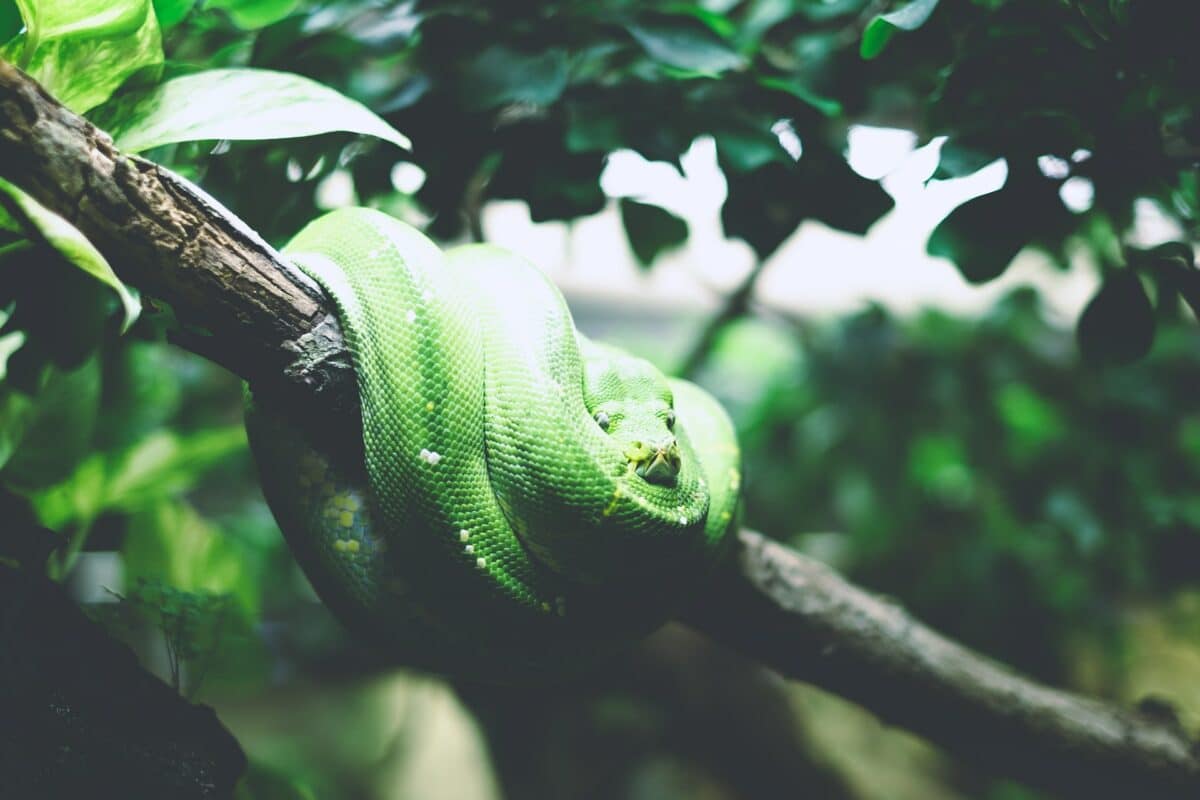
The green mamba is an elongated, lean-bodied snake with flat scales and a slender, coffin-shaped head. It is covered with bright green colored scales covering the darker skin underneath. The scales are beautifully arranged on the snake’s body, similar to the pattern of interlock paving stones. Green mambas are known to be swift and can move up to 7 miles per hour.
Their abdomen is colored in a yellow to light green hue. Green mambas likewise have small, immobile fangs (front teeth/ daggers) at the anterior of their mouths. These snakes are enormously poisonous, and incidents of quick and deadly consequences have been recorded numerous times, with death occurring within 30 minutes. It is capable of killing a human with just a single bite.
These species range in length from 4-7 feet as adults, while hatchlings average between 14-24 inches. They have medium-sized eyes with round pupils. Green Mambas mate during the rainy season between April and June. They lay a clutch of 4-17 eggs in leaf litter in hollow trees in October or November. Hatchlings emerge about 90 days later.
The type known as Western Green Mambas is found with variable tints of dark green color on their backs with distinct yellow and green bellies that slowly fade to an orange hue and yellow tone by the time the body reaches the tail. There are dusky borders amid their large scales that endow them with an outstanding exterior. The young snakes are frequently turquoise in color and progress into their bright green as they develop into adults.
The Characteristic Fangs of the Green Mamba
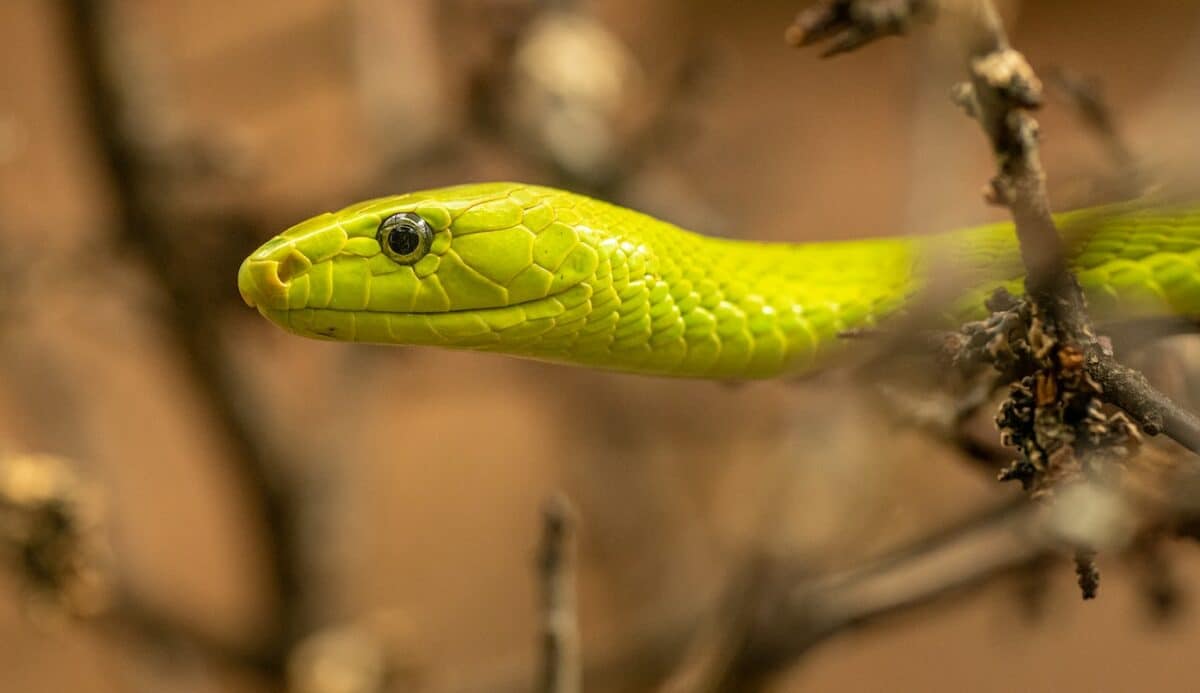
The anterior teeth of Green Mambas are known as the “fangs” and are reasonably elongated, positioned in the visible part of the maxillary bone, forward-facing to the maxilla. They have the ability to revolve around their axis with the support of the pre-frontal bone.
The fact that these snakes possess adequate regulating mechanisms and control of the mobility of their fangs is quite unique. It is not frequently seen in similar species. Additionally, there are numerous tiny teeth lined in the front of the jaw.
Taxonomic Classification of Green Mambas
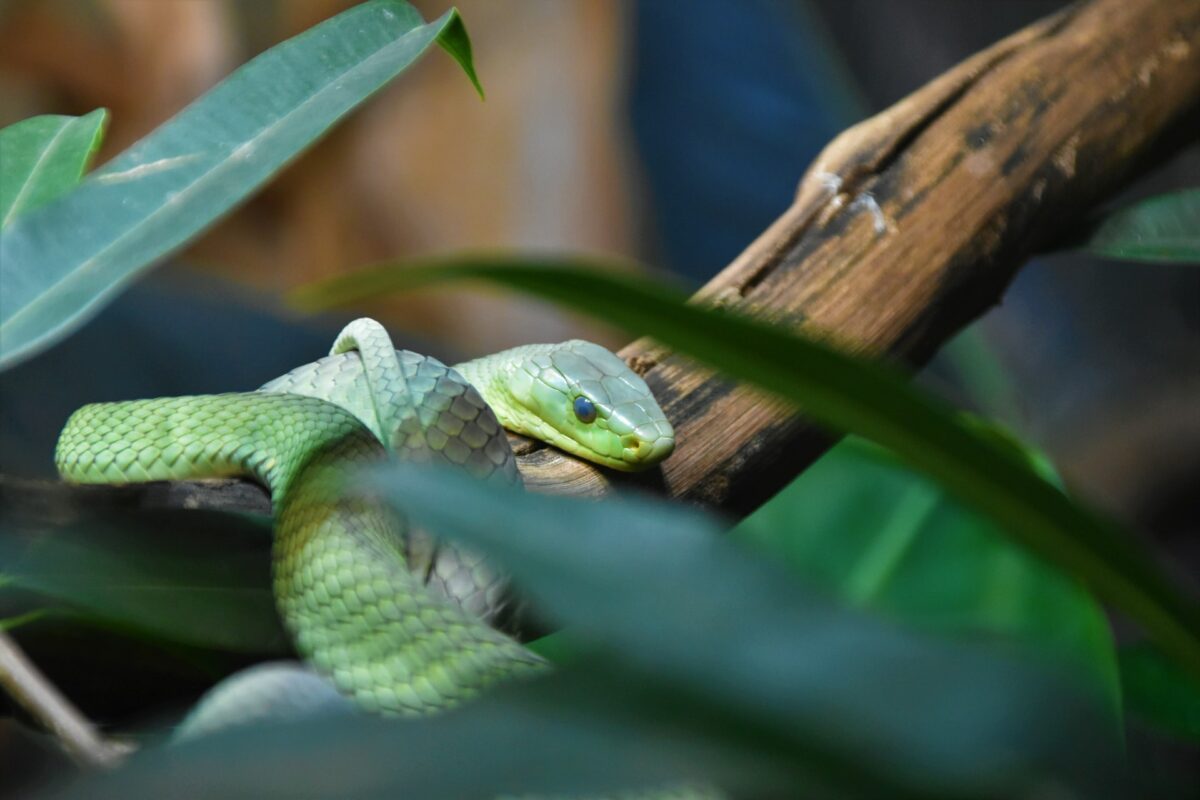
Here’s the taxonomic classification of the green mamba. By comparing the taxonomic classifications of two separate species, one can establish when evolution separated them and how closely or distantly they’re related. Bear the stargazer fish’s taxonomic classification in mind when reading through this one to compare them!
Kingdom: Animalia
Subkingdom: Bilateria
Infrakingdom: Deuterostomia
Phylum: Chordata
Subphylum: Vertebrata
Infraphylum: Gnathostomata
Superclass: Tetrapoda
Class: Reptilia
Superorder: Squamata
Order: Serpentes
Suborder: Alethinophidia
Family: Elapidae
Subfamily: Elapinae
Genus: Dendroaspis
Species: Dendroaspis Angusticeps
Where are Green Mambas Found?
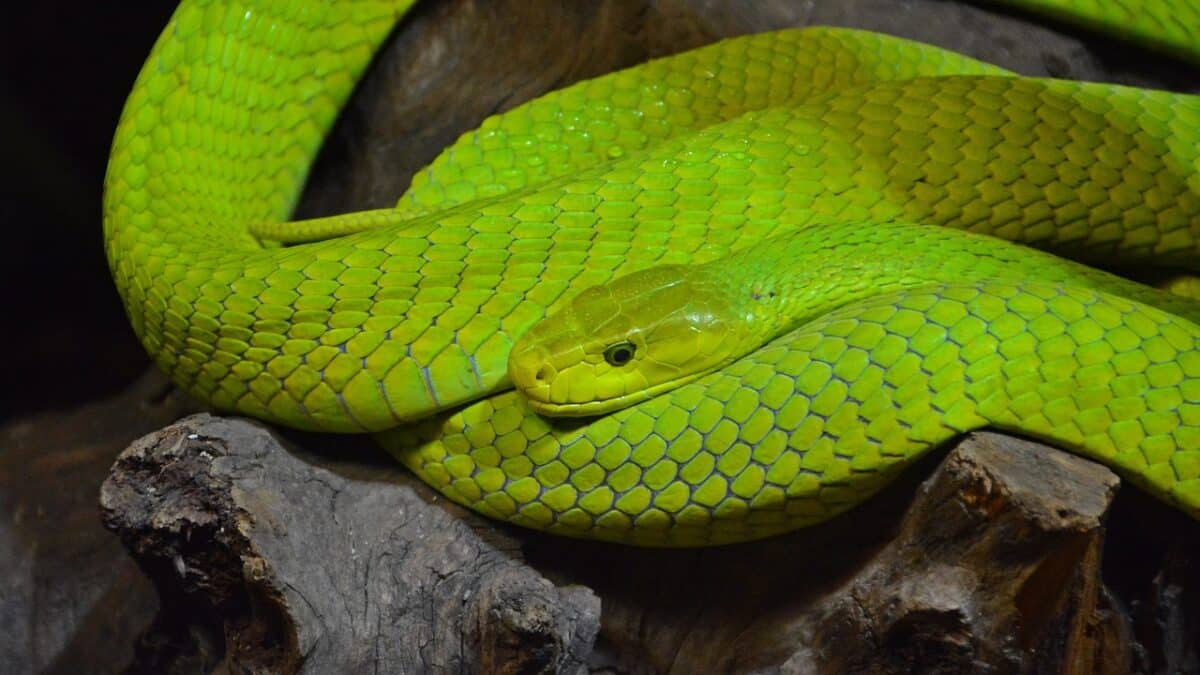
The Green mambas are inherent to shoreline districts of the Southern region of East Africa. You can spot them around the Eastern Cape in South Africa, Kenya, Mozambique, Tanzania, Eastern Zimbabwe, and Southern Malawi.
Also, the green mambas have a preference for seaside expanses with thick and shaded foliage. They are also known for their presence in trees, contrary to their relatives, the black mamba, who prefer the below-sea-level humid rainforests, shoreline bushlands, sandbanks, and woodlands.
Green mambas are unsociable animals and have been reported to be introverted and private. They are not territorial, although they have a tendency to live in one region. It has been observed that up to five Green mambas have been found living in the same tree.
How Many Species of Green Mambas Are There?
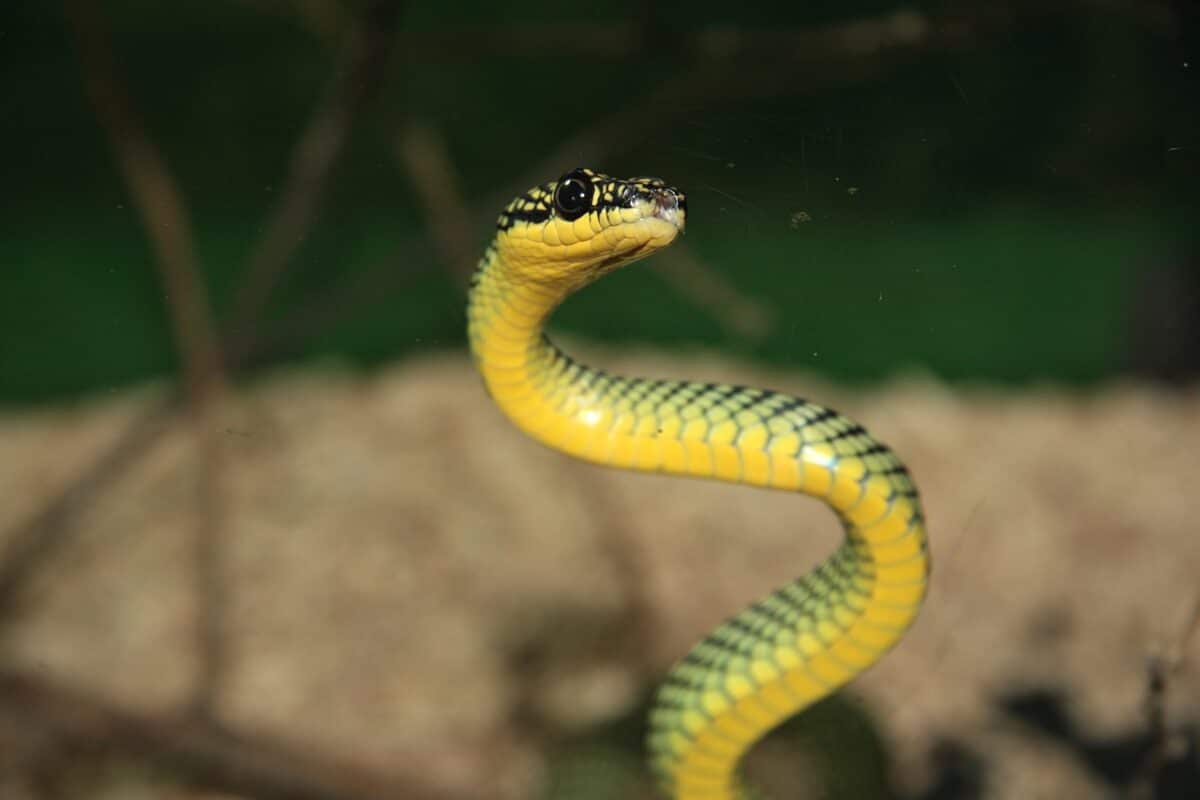
Mambas are the four species of snakes contained by the Dendroaspis genus as listed below,
· Black mamba is known by the scientific name of Dendroaspis polylepis.
· Eastern green mamba is known by the scientific name of Dendroaspis angusticeps.
· Western green mamba is known by the scientific name of Dendroaspis viridis.
· Jameson’s mamba is known by the scientific name of Dendroaspis jamesoni.
Captivatingly, the Dendroaspis genus is 1 out of the 55 total genera, comprising a nearby total of 350 species falling within the family known by the name of Elapidae. This renders mambas narrowly associated with further elapid snakes, namely Cobras, Kraits, and Taipans.
The green mamba is an equally well-known species of snake all over its topographical range, and populations are assumed to be unwavering.
Green Mambas Preferred Diet
Green mambas are scavengers referred to as carnivorous, essentially meaning meat eaters. They will feed on eggs, birds, frogs, lizards, rats, mice, squirrels, hyraxes, or similar small-sized mammals.
They prefer hunting foods available in the trees, but in cases where they can’t find anything in trees, they may hunt on the ground. It is an established fact that Green mambas possess an extraordinary metabolism.
Biologists have studied their behaviors and patterns under controlled environments to deduce the fact that these snakes are comparatively inactive, typically behind the prey, waiting for it to go into the green mamba’s deadly mouth directly.
Reproductive Behavior of Green Mambas
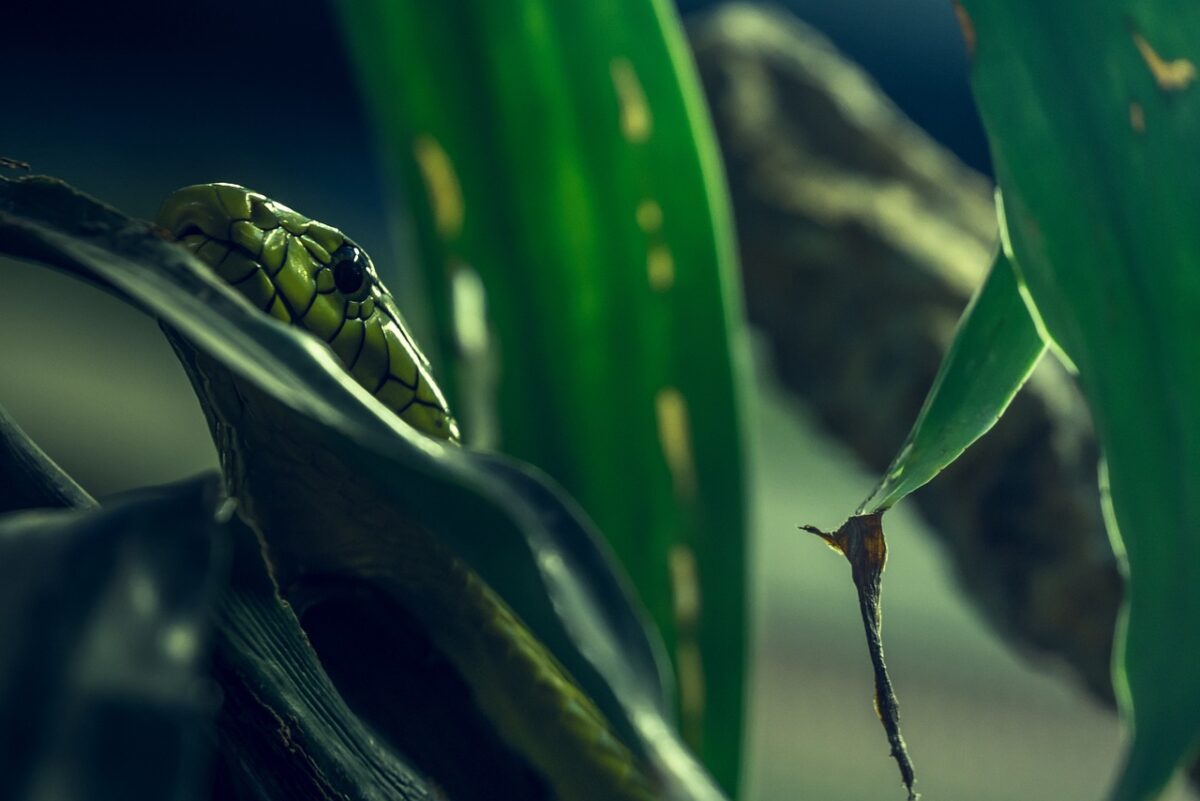
Green mambas are polygynandrous, essentially meaning that both males and females have numerous mates. Males discover females by following an aroma trajectory and will compete for females by fighting or twirling.
These battles may remain in action for more than a few hours but do not consist of biting; instead, one male tries to push the other down with the use of force. According to studies, females lay a batch of 4 to 17 eggs that hatch in about 10 to 12 weeks.
Baby green mambas are self-dependent right from the moment they hatch and are already deadly poisonous. Complete reproductive development is achieved at roughly 3 to 4 years of age. They have a life expectancy of up to about 14 years.
Well-Known Predators of Green Mambas
The green mamba is feasted on by human beings, mongooses, snakes, eagles, and genets (cat-like animals). Hornbills and further snakes have a tendency to target young green mambas.
Interaction Between Green Mambas and Humans
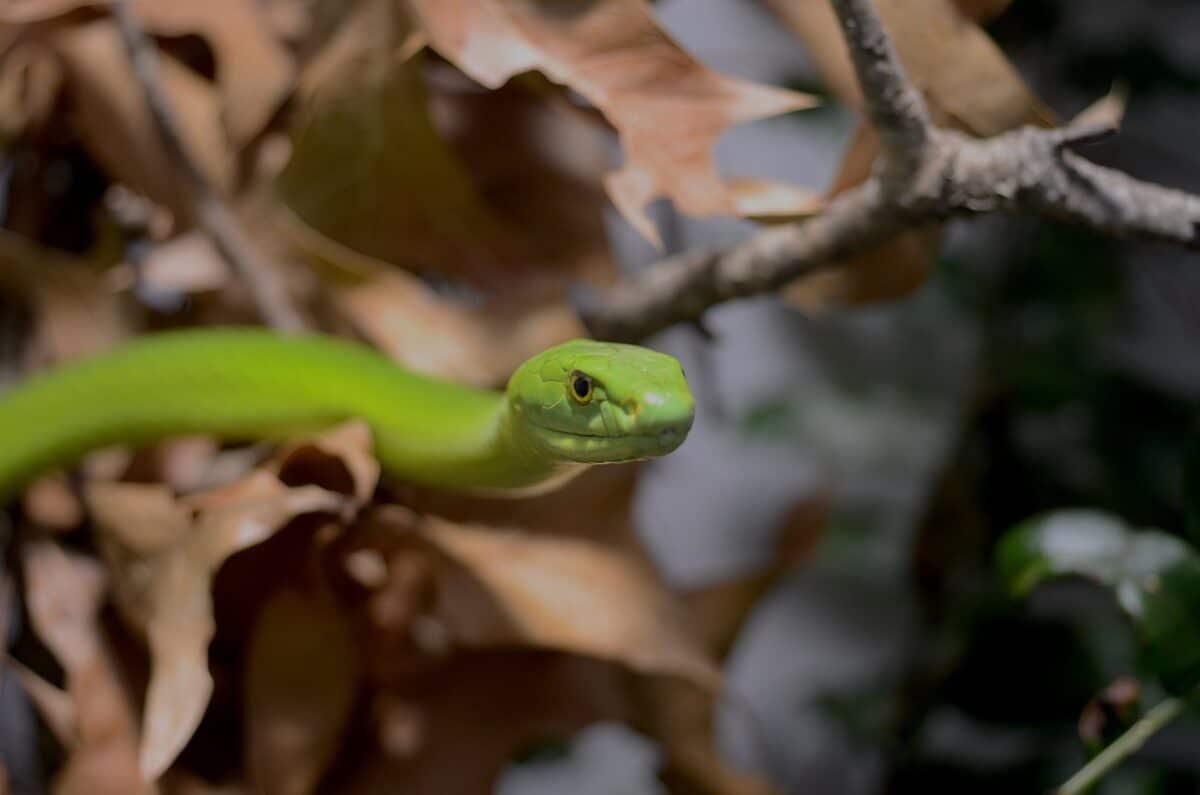
The Green mamba and human beings share their habitats in close vicinity, inevitably leading to repetitive interaction of varied nature between the two. Green mambas are known to bite humans if they feel threatened, with the subsequent pattern of symptoms surfacing following the bite.
An attack by a green mamba can cause death in a very short time window. The reported symptoms account for generalized pain and swelling at the site of the snake bite. Overall signs contain hypotension, belly pain, queasiness, vomiting, fever, flushing of the face, aggravated sweating, breathing distress, and disorders associated with the heart.
Humans are responsible for development in all forms; also the one that affects the environment and subsequently leads to communal interaction. However, these snakes are extremely adjustable. Even though human infringement has caused harm and detriment to their favored habitat, they are fairly content creating new homes in the dense herbaceous border surrounding buildings and homes.
Despite the fact that the green mambas have opportunely relocated right into human-created surroundings, they’re still more likely to flee than fight. Some have said that they are bad-tempered, but others believe them to be anxious. With any given case, the snakes don’t incline towards anger, and bites are very infrequent, except for situations when the creature is irritated or threatened.
Anti-venom
There is a possible treatment for green mamba bites and it has been established to be extremely effective. Typically one would require ten ampoules of anti-venom. Luckily, they hardly ever bite humans without any precedent; rather, they would choose to escape the vicinity rather than resort to biting.
It is impossible to accurately predict Green Mamba’s actual behavior. Hence it is advisable to constantly take precautions and maintain an observant eye. Selected snakes can develop into very companionable forms for a longer period of time, but no one can guarantee the absence of incidents.
Check out more information about green mambas in this guide.
Similarities between the Stargazer Fish vs. Green Mamba
- Both stargazing fish and green mambas do not go after their prey. Instead of hunting them down, they wait patiently for their prey to fall right into their trap, and then they eat them up.
- Comparative studies and observation reveal that both the aforementioned beings are carnivores, solely surviving on the meat of other creatures.
- On the scale of fatality, it has been found that both the creatures under scrutiny have similar venomous bites/stings.
- The reproductive pattern of both animals under scrutiny is similar as the female lays eggs in both cases, leading to their young being hatched after the gestation period is complete (albeit very different kinds of eggs.)
- Green mambas can swim and move effortlessly and simply in the water, similar to the stargazer fish living their whole lives in the ocean.
Wrapping Up: Stargazer Fish vs. Green Mamba
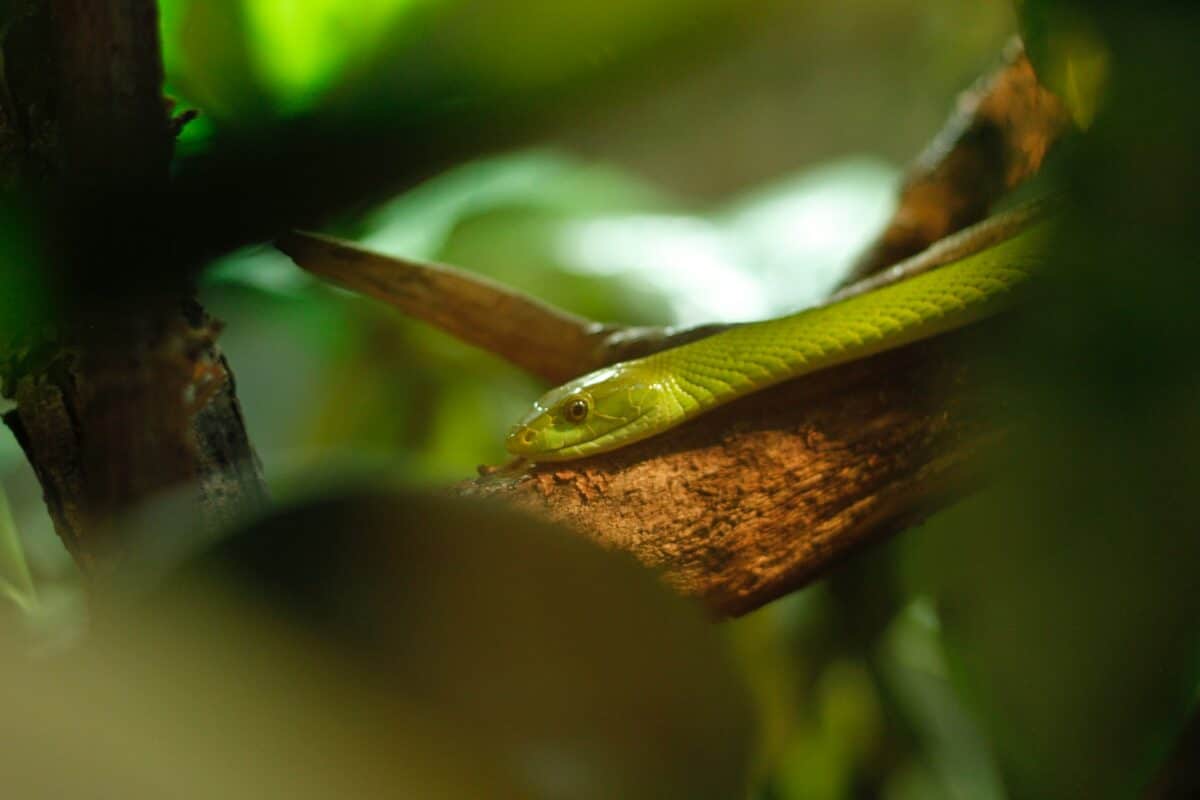
Key Facts:
| Habitat devastation and deforestation are chief reasons posing a likely hazard of extinction to Green Mambas. |
| Green mambas would most likely escape when they sense a threat and will only attack if they are restricted. |
| Snakes are equipped to feel sound and sensations with their entire bodies. |
| Stargazers are colored with a dark tint of brown color, letting them merge and camouflage with the sea bed. |
| Stargazer fish are poisonous, and numerous have a body part that generates electric shocks, so a small number of predators are eager to feast on these fish. |
| Stargazer Fish habitually reproduce amid May and June, laying their eggs in the mud in ocean beds that then drift to the water’s surface later on. |
This comparison and contrast between two distinctly different animals, namely the StarGazer fish and Green Mamba snakes, has hopefully been a learning and fruitful experience. We aimed to provide you with a thought-provoking journey to help you to think outside the conventional box of comparing apples to apples.
Initially, the thought of the aforementioned organisms being remotely related to each other was very meager, but as we proceeded with the study and aggregated the diverse facts, we ended up with many characteristic features that ran along parallel lines, although in their own forms.
Thank you for reading this article on the stargazer fish vs. green mamba! If you enjoyed this comparative assessment you will definitely enjoy our comparison between the Falcon vs. Hawk.
- Abandoned Dog Shows Up at Cat Sanctuary and Makes Best Friend - April 27, 2024
- Old Man Saves Terrified Wombat Stranded After a Flood - April 26, 2024
- Man Saves Pelican Choking on Fish at the Last Second - April 26, 2024

